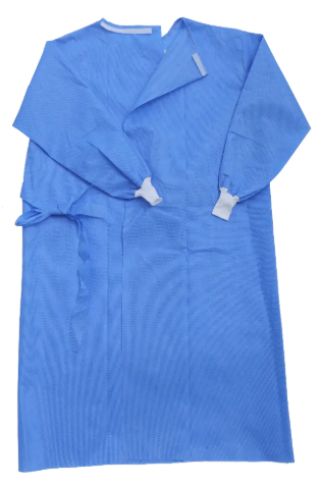Why Do You Need Hospital Protective Gowns for COVID-19 Pandemic?

The COVID-19 pandemic has highlighted the necessity of using personal protective equipment in hospitals, clinics, and other health care settings. According to medical experts, the transmission of the COVID-19 virus occurs when people come into contact with the bodily fluids of infected persons. So, if you get splattered with spit or blood, the chances are high that you will get the virus.
However, it may be possible to contain the viral spread to a considerable extent and offer better safeguards to medical staff, patients, and visitors by using proper personal protective equipment.
A hospital protective gown is a part of such equipment, along with masks, gloves, visors, and so on, and comes in different types. There are surgical gowns, isolation gowns, surgical isolation gowns, non-surgical gowns, procedural gowns, and operating room gowns. And you can get these in up to four levels of protection.
Reasons why you need to use hospital protective gowns for the COVID-19 pandemic
Here are some of the reasons why wearing hospital protective gowns can keep you safe:
- The material that manufacturers use for making a hospital protective gown has a high pathogen resistance, and it will protect the wearer when he or she comes into contact with infectious microorganisms.
- A hospital protective gown will serve as a protective barrier against liquid penetration and will prevent bodily fluids from seeping in through the material for up to an hour.
- A hospital protective gown will protect the wearer if he or she inadvertently comes in contact with any liquid or solid materials that may be potentially infectious. People who will benefit from such gowns include doctors, surgeons, nurses, and other medical staff that have to touch or come near patients with COVID-19 or other infectious conditions.
- A hospital protective gown will prevent the wearer from transmitting and spreading infectious microorganisms to other people. The wearers can include COVID-19 patients, those in quarantine after exposure to the COVID-19 virus, and those who are suffering from different infectious illnesses.
- A hospital protective gown will ensure that vulnerable patients with severe health issues and compromised immune systems will remain protected from transmissible infections. Given the rapid spread of the COVID-19 virus and other infectious diseases, it is especially essential to take all possible precautions with patients in already precarious health conditions.
Buying the right hospital protective gown for patients, healthcare workers, and visitors
When buying a hospital protective gown, you should make sure that it meets the established Chinese, EU, and US standards for protective gear. They are available in four levels of protection. You should also check that the hospital protective gown you purchase is of the protection level you require.
If you are going to be in situations with minimal health risk, you can make do with a Level 1 hospital protective gown. For instance, if you are going to be in a standard hospital medical unit or health facility where you must receive or provide health care.
For low-risk situations, like if you take blood samples in a pathology lab or do suture work in an intensive care unit, you can use the level 2 hospital protective gowns. You will need a level 3 hospital protective gown if you are going to encounter more moderate risk situations where you could risk splattering yourself when drawing arterial blood or inserting an IV. You will also find them useful for wearing in trauma centers and emergency rooms.
The level 4 hospital protective gowns are for very high-risk situations where you are likely to come in close contact with infectious fluids as well as airborne and non-airborne pathogens. These gowns have a much higher level of barrier resistance and can prevent liquids from soaking in for up to an hour.
Overall, wearing hospital protective gowns is an absolute must in health care settings during the COVID-19 pandemic. It will significantly help in reducing the transmission of the virus and will protect vulnerable people with weakened immune systems. That will take the pressure off to a considerable extent on hospitals and other medical care facilities that are struggling to cope with the influx of COVID-19 patients and to keep their medical staff from getting the infection.




